Imagine walking into a room where the carpet perfectly matches the decor. It makes the space look harmonious and beautiful. But how do experts and homeowners make this happen? The answer is in the art of carpet matching. This skill can turn any room into a stunning, unified space. In this guide, we’ll show you how to master carpet matching. You’ll learn about color theory, pattern recognition, and texture compatibility. These are the key principles for creating amazing carpet combinations that enhance your home or office.
Click to use Silverigroup personal shopper services
Key Takeaways:
- Discover the essential elements of color, pattern, and texture that are crucial for successful carpet matching.
- Explore techniques to coordinate your carpet choices with your existing home decor for a cohesive look.
- Learn how to select the right carpet materials and fibers to ensure long-lasting durability and comfort.
- Gain insights into room-specific carpet matching tips to create tailored solutions for every space.
- Discover common carpet matching mistakes and how to avoid them for a flawless outcome.
Are you ready to make your living space look amazing with carpet matching? Let’s explore the secrets to improving your home’s look through smart carpet choices.
Understanding the Basics of Carpet Matching
Learning to match carpets is key to a beautiful interior. It involves color theory, pattern recognition, and texture. These elements make sure your floor looks great with the rest of the room.
Color Theory Fundamentals
Color theory is the base of carpet matching. Knowing primary, secondary, and tertiary colors helps pick the right carpet colors. It’s about finding a color palette that looks good together.
Pattern Recognition Essentials
Patterns are important in carpet design. They range from big and bold to small and subtle. Choosing the right pattern can make a room feel different.
Click to buy antique rugs from Silverigroup
Texture Compatibility Basics
Texture is also vital. Loop pile, cut pile, and mixed textures affect how a room feels. The carpet’s texture should match the room’s other materials for a cohesive look.
Mastering color theory, pattern recognition, and texture makes finding the perfect carpet easy. With this knowledge, you can pick the right carpet to enhance your space’s design.
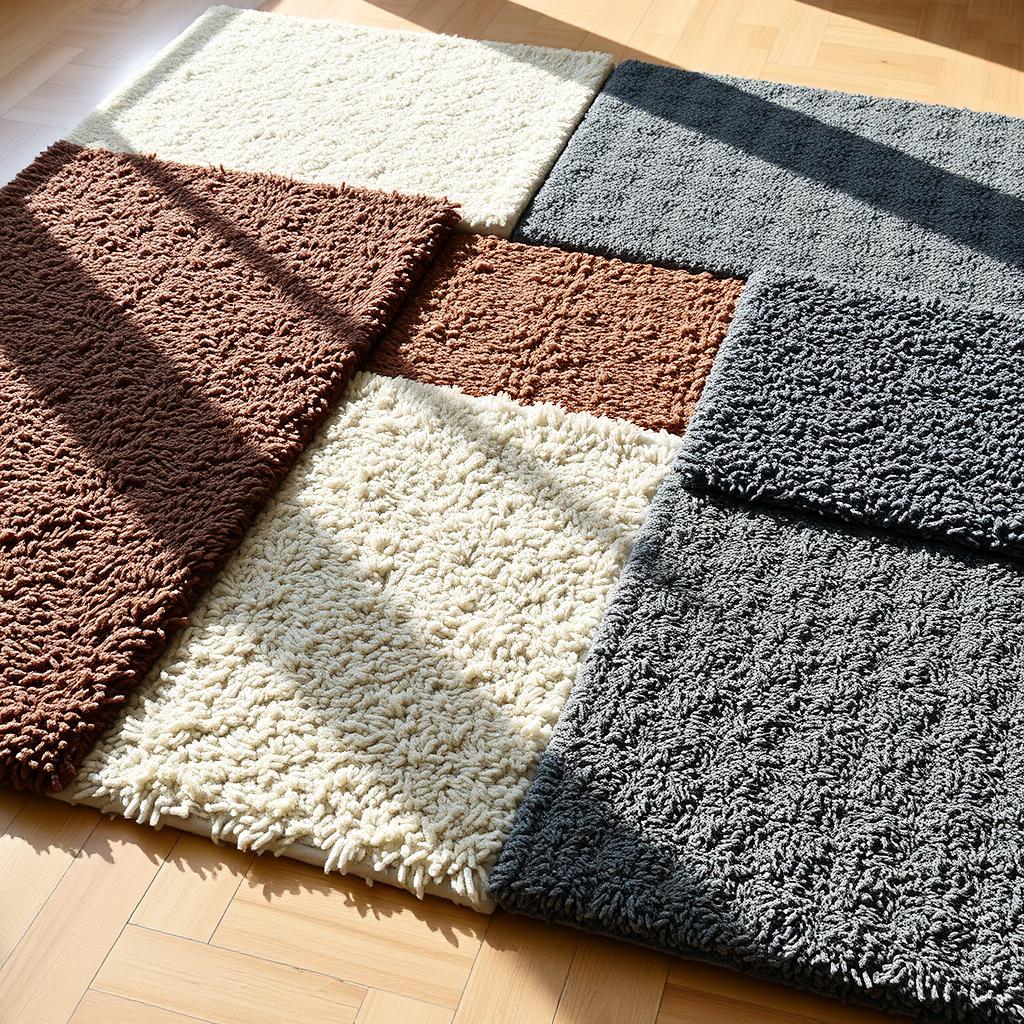
How to Carpet Match: Step-by-Step Process
Finding the perfect carpet for your home can seem hard, but it’s doable. The carpet matching process is about picking the right color, pattern, and texture. This makes your living space look great and feel welcoming. Here’s a simple guide to help you choose the right carpet:
- Start by looking at your room’s size, layout, and how much light it gets. This helps you pick the best carpet selection for your space.
- Choose a color scheme that goes well with your decor. Think about warm or cool tones and how they’ll work with the room’s other elements.
- Look at different carpet patterns like solids, stripes, or geometric designs. Pick one that fits your style and the room’s vibe.
- Think about the carpet’s texture. Options include loop pile, cut pile, and blended fibers. Choose one that matches your comfort and maintenance needs.
- Get carpet samples and put them in your room. See how they look with your furniture and lighting.
- Make sure the carpet goes well with your walls, furniture, and other decor. This creates a unified look.
- If you need help, talk to a design expert or a trusted carpet store. They can guide you through the carpet matching process.
By following these steps, you’ll find a carpet that makes your home look and feel amazing.
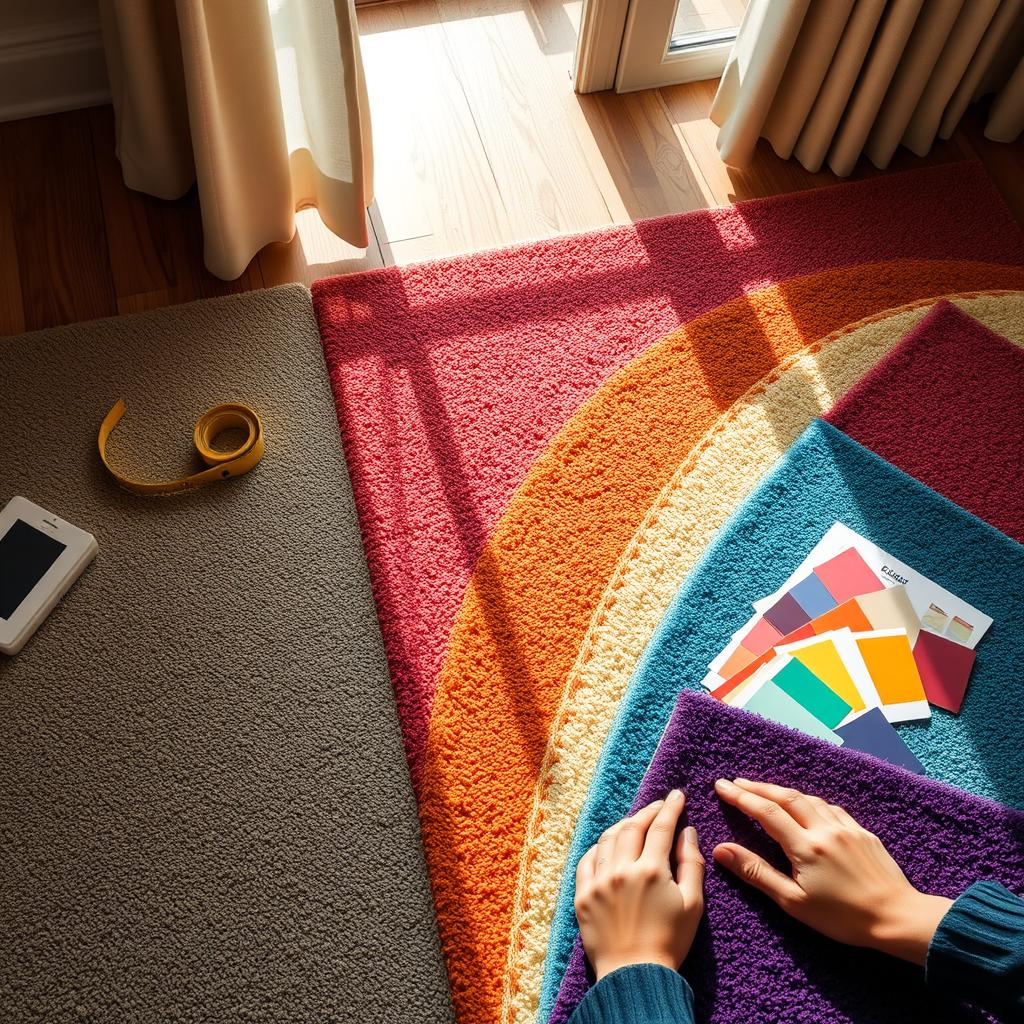
Choosing the Right Carpet Colors for Your Space
Choosing the right carpet colors is key to a harmonious and appealing interior. The right colors can change a space, setting the mood and feeling. We’ll look at warm vs. cool colors, light vs. dark carpets, and how colors affect us.
Warm vs. Cool Color Palettes
Warm colors like reds, oranges, and yellows make a space cozy and inviting. They make a room feel more intimate and comfy. Cool colors, such as blues, greens, and purples, bring calm and serenity. Think about how these colors will work with your room’s decor and lighting.
Light and Dark Carpet Considerations
The lightness or darkness of your carpet affects a room’s feel. Light carpets make a room feel open and airy, making it seem bigger. Dark carpets add sophistication and coziness, making a space feel more intimate. Choose colors that match your room’s size and lighting for the best effect.
Color Psychology in Carpet Selection
Color psychology is crucial in picking carpet colors. Different colors can make us feel certain ways and change a room’s mood. Blues and greens calm us, while reds and oranges energize. Knowing this can help you pick colors that match your room’s mood and purpose.
“The right carpet colors can transform a space, creating a sense of harmony and balance that enhances the overall interior design.”
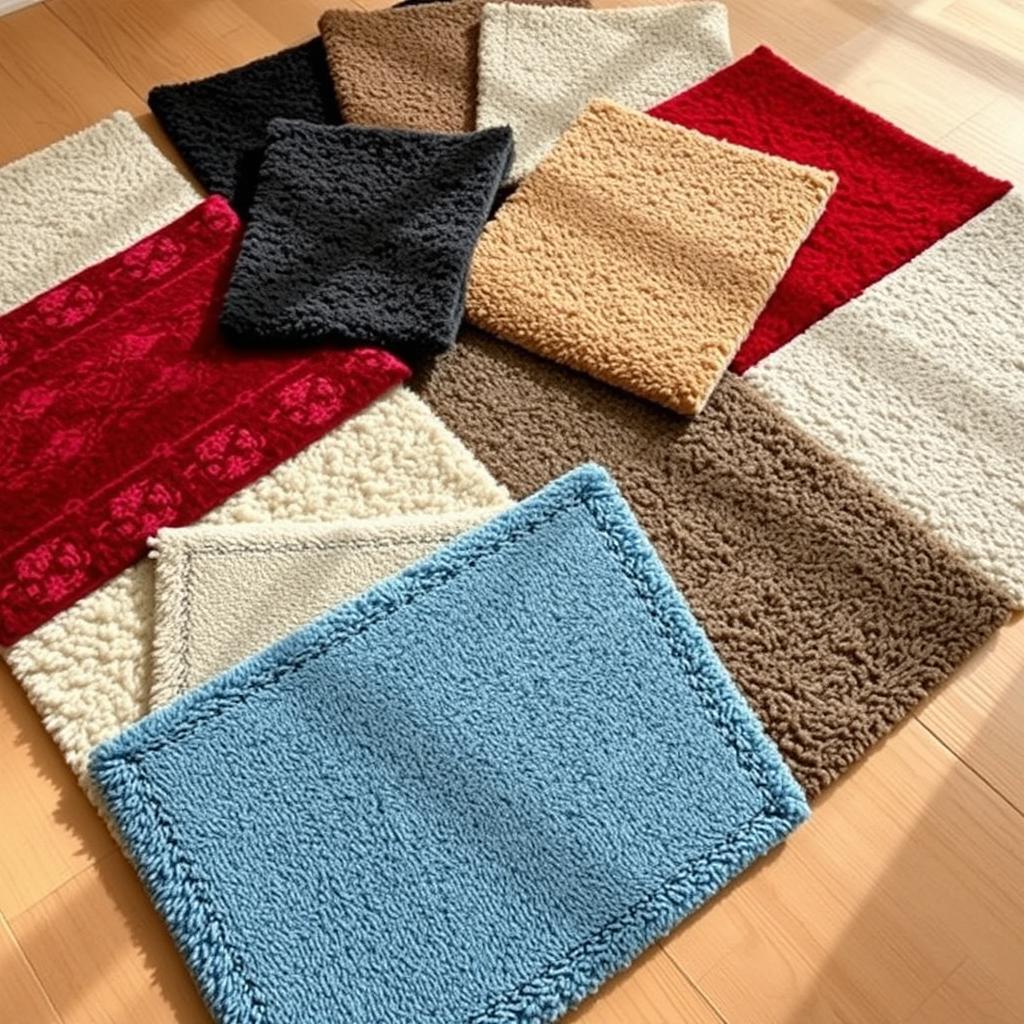
Coordinating Carpet Patterns with Home Decor
Choosing the right carpet pattern can really make your space look better. It’s all about finding a balance between matching and adding interest. With a few simple tips, you can make patterned carpets fit right in and make your home feel welcoming.
Understanding the scale of your design is key. Choose carpet patterns that match the size and feel of your room. Big patterns can be too much, while small ones might get lost. You want a pattern that fits well with your room and furniture. It’s also important to think about how the carpet pattern fits with your decor. Find patterns that either stand out or blend in with your furniture, art, and accessories. A bold carpet can contrast with soft furniture, while a simple carpet can tie together different patterns.
Think about the mood you want to create with your carpet. Warm, organic patterns can make a room feel cozy, while modern designs can add a sleek touch. Choosing a carpet that matches your style can make your space look better and feel more cohesive. To successfully match carpet patterns with your decor, keep an open mind and focus on balance. Consider the size, design, and mood you want to create. This way, you can make your home look beautiful and inviting, with patterned carpets as the centerpiece.
Material Selection and Compatibility
Choosing the right carpet material is key for your home. You have natural fibers and synthetic options to pick from. Each has its own benefits and drawbacks.
Natural Fiber Options
Natural fibers like wool and sisal are popular. They’re durable, soft, and good for the environment. Wool carpets are great for keeping warm and resisting stains.
Sisal is strong and eco-friendly. It brings a unique texture to any room.
Synthetic Carpet Materials
Synthetic carpets, like nylon and polyester, are affordable and easy to clean. They come in many colors and patterns. Nylon is strong for busy areas.
Polyester is softer and has more colors. It’s perfect for elegant or delicate spaces.
Blended Fiber Considerations
Blended fiber carpets mix natural and synthetic materials. They’re durable and stain-resistant like synthetic fibers. But they also have the softness and look of natural fibers.
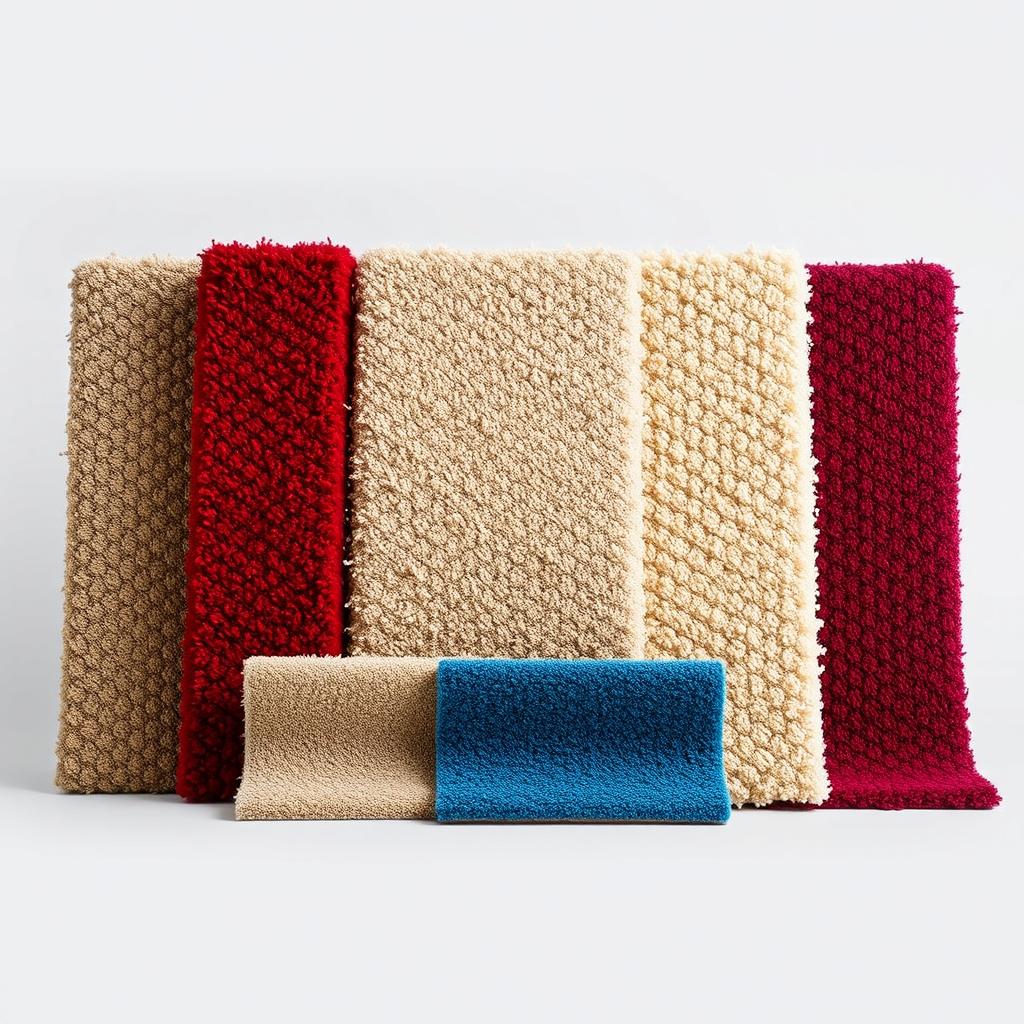
The right carpet material depends on your needs, budget, and taste. Knowing the pros and cons helps you choose. This ensures your space looks cohesive and harmonious.
Room-Specific Carpet Matching Tips
Choosing the right carpet for your home is more than picking a design or color you like. It’s about matching the carpet to each room’s needs. This way, you can make your home look and feel better.
Living Room Carpets
In the living room, where everyone gathers, choose room-specific carpets that are tough and easy to clean. Go for carpets with a medium or low pile. They can handle lots of foot traffic without getting worn out. Neutral colors or patterns fit well with many decor styles.
Bedroom Carpet Placement
In the bedroom, soft and luxurious carpet placement is best. Pick plush, high-pile carpets for a cozy feel. Match the carpet’s color and pattern with your bedroom’s look for a nice, balanced space.
Home Office Carpet Considerations
In home offices, practicality is key. Choose room-specific carpets that are easy to care for and won’t stain. Stick to neutral colors or simple patterns to keep the space professional and focused.
| Room | Carpet Recommendation | Key Factors |
|---|---|---|
| Living Room | Medium or low pile, neutral or patterned | Durability, easy maintenance |
| Bedroom | Plush, high pile | Comfort, luxurious feel |
| Home Office | Low-maintenance, stain-resistant | Practicality, professional look |
By choosing the right room-specific carpets and carpet placement for each room, you can make your home look great. It will feel cohesive and inviting.
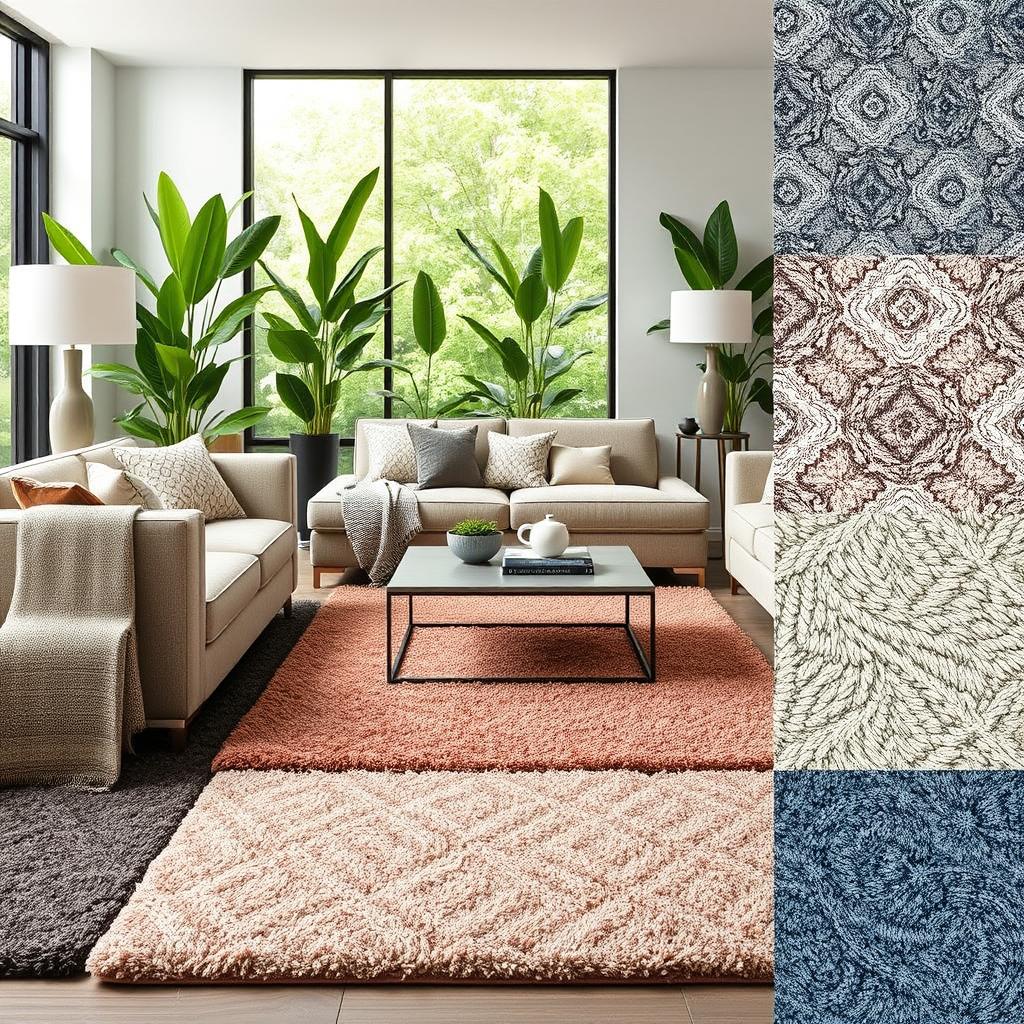
Carpet Texture and Style Combinations
Choosing the right carpet textures and styles is key to a beautiful home. It’s important to know the difference between loop pile and cut pile carpets. Also, mixing different textures in one space can make it look amazing.
Loop Pile vs. Cut Pile
Loop pile carpets have uncut fibers for a smooth look. Cut pile carpets, on the other hand, have tufts that are sheared for a soft feel. Your choice depends on the look you want and how much foot traffic the area gets.
Mixing Different Carpet Textures
Mixing carpet textures can make a room feel richer and more interesting. For example, a smooth loop pile carpet in the living area can match a plush cut pile rug in the sitting area. This mix of carpet textures and carpet styles requires a keen eye for balance. Knowing the differences between loop pile and cut pile carpets is essential. It also helps to mix different carpet textures well. This way, you can create stunning spaces that show off your design skills.
Working with Carpet Samples
Choosing the right carpet for your space is crucial. Getting hands-on with carpet samples is key. You can check the color matching, texture comparison, and how it fits with your décor. Begin by picking carpet samples that catch your eye. Look at them under different lights, natural and artificial. This helps you see how the colors and textures will look in your home.
- Place the samples on the floor and see how they look with your furniture and walls.
- Notice the undertones of the carpet colors and how they match or contrast with your current colors.
- Feel the samples to check the texture and softness, making sure it meets your needs.
| Carpet Sample | Color | Texture | Compatibility |
|---|---|---|---|
| Sample A | Warm Beige | Plush Velvet | Complements Existing Decor |
| Sample B | Cool Gray | Looped Berber | Contrasts with Furniture |
| Sample C | Vibrant Red | Textured Saxony | Requires Major Decor Overhaul |
By carefully looking at carpet samples, you can choose wisely. This ensures your new carpet fits perfectly with your home’s look. Take your time to explore and trust your gut – the right carpet is out there.

Professional Installation and Seam Matching
Getting a carpet installed perfectly is key for a top-notch look. Professional installers make sure the seams and patterns fit together just right. This creates a beautiful finish that stands out.
Proper Seam Placement
Putting seams in the right spots is crucial for a carpet that looks like one piece. Experts know how to hide seams under furniture or along walls. This makes the carpet look smooth and continuous.
Pattern Alignment Techniques
Aligning carpet patterns is what pros do best. They use special techniques to make patterns match perfectly at seams. This is especially important for patterned carpets, as wrong alignment can ruin the look.
Getting carpet installation, seam matching, and pattern alignment right is essential for a professional carpet look. Hiring experienced installers ensures your carpet will enhance your home’s style and beauty.
Maintaining Matched Carpets Over Time
To keep your matched carpets looking great, you need a good plan for maintenance, cleaning, and color care. With a few easy steps, your carpets will stay beautiful for many years.
Carpet Cleaning and Color Preservation
Keeping your carpets clean is key to their color and look. Choose professional carpet cleaning services that use gentle cleaners. Also, pick the right cleaning products and methods to keep your carpet’s color safe.
Stain and Spill Management
Act fast when spills or stains happen on your carpets. Blot the spill right away with a clean cloth. Then, use a carpet-safe cleaner to treat the stain. Don’t scrub too hard, as it can mess up the carpet’s look.
Routine Maintenance and Vacuuming
- Vacuum your carpets often to get rid of dirt and dust. This helps keep them looking bright and new.
- Use a good vacuum with a rotating brush to clean well.
- Focus on busy areas to keep your carpets looking even and nice.
Protecting Carpet Edges and Seams
The edges and seams of your carpets can wear out quickly. Put on protective edging or transition strips to keep them safe. This helps prevent color or texture issues later on.
| Carpet Maintenance Task | Frequency |
|---|---|
| Vacuuming | 1-2 times per week |
| Professional Carpet Cleaning | Every 12-18 months |
| Spot Cleaning | As needed |
| Protective Edging Inspection | Quarterly |
By sticking to these carpet maintenance tips, you can keep your carpets looking good for a long time. This ensures your home’s floors stay beautiful and coordinated.
Common Carpet Matching Mistakes to Avoid
Getting a seamless carpet installation needs careful attention. Even experts and homeowners can make mistakes. We’ll look at two big issues: pattern misalignment and color coordination errors.
Pattern Misalignment Issues
Pattern misalignment is a big problem. When carpet patterns don’t match, it looks bad. This happens if the installation isn’t precise or if the pattern isn’t considered during cutting and seaming.
- Make sure patterns align at seams and transitions.
- Work with your installer to plan cutting and seaming to avoid misalignment.
- Choose a carpet with a simple pattern to reduce misalignment risks.
Color Coordination Errors
Poor color choice is another mistake. A carpet that doesn’t match your decor or color scheme looks bad. It’s important to think about the room’s lighting, furniture, and design to get it right.
- Look at the room’s colors and pick a carpet that fits.
- Use color theory to pick colors that work well together.
- Try carpet samples in the room to see how they look under real lighting.
Knowing these mistakes can help you avoid them. This way, you can get a beautiful, well-coordinated carpet that makes your space look great.
Conclusion
Starting your carpet matching journey? Keep in mind the key points from this guide. Color coordination, pattern recognition, and texture matching are crucial for a cohesive look. These basics help you make choices that improve your home’s look. Whether updating one room or redoing your whole house, carpet matching is key. It helps you make your floors blend with your design. This guide has given you the knowledge to tackle your projects with ease. With the right strategy, your floors can become a part of your design vision. Use the tips from this guide to create spaces that show off your style. Your home will look better and feel more welcoming.
FAQ: how to carpet match
How do I choose the right carpet color for my space?
When picking carpet colors, think about your space’s overall look and feel. Warm colors like red, orange, and yellow can make a room cozy. Cool colors like blue, green, and purple can calm it down. Light-colored carpets can make a room feel bigger. Dark carpets add a touch of elegance.
What are the different types of carpet patterns and how do I match them?
Carpet patterns range from simple to complex. Solid and textured patterns are easy to match with different decor. More detailed patterns, like stripes or geometric shapes, need careful thought to fit with the room’s look. When matching patterns, focus on scale and repetition. This helps create a unified look.
How do I choose the right carpet material for my needs?
Carpet materials vary in durability, upkeep, and cost. Natural fibers like wool and sisal are luxurious but need more care. Synthetic materials like nylon and polyester are stain-resistant and easy to clean. Blended fibers offer a mix of looks and function. Think about foot traffic, desired look, and budget when picking a material.
How can I ensure a seamless carpet installation and pattern matching?
Getting a professional for carpet installation is key for a smooth look. They make sure seams are right and patterns match perfectly. They also help with pattern matching, aligning designs across seams.
What are some common carpet matching mistakes to avoid?
Common mistakes include misaligned patterns and colors that clash with decor. Also, picking the wrong texture for the space. Plan your choices carefully and seek help from a pro for a stunning result.

